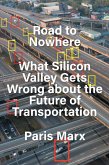Through detailed case studies of major global cities like London and Singapore, readers gain practical insights into successful system implementations and their lasting impact on urban landscapes. The book's unique strength lies in its interdisciplinary approach, combining quantitative operational data with qualitative social impact assessments.
Drawing from extensive transportation data spanning 1950-2020, it reveals how successful bus systems emerge from the careful integration of technology, policy, and community needs. The analysis covers everything from passenger behavior patterns to route optimization strategies, making it particularly valuable for transportation professionals and urban planners seeking practical solutions to modern transit challenges.
Structured in four major sections, the book progresses logically from historical context through system implementation, economic models, and future trends. It addresses contemporary debates such as private versus public operations and the transition to zero-emission vehicles, while maintaining a balanced perspective on how bus systems fit within broader transportation networks. The inclusion of detailed case studies, financial modeling tools, and planning frameworks makes this an essential resource for anyone involved in urban transportation development.
Dieser Download kann aus rechtlichen Gründen nur mit Rechnungsadresse in A, B, BG, CY, CZ, D, DK, EW, E, FIN, F, GR, H, IRL, I, LT, L, LR, M, NL, PL, P, R, S, SLO, SK ausgeliefert werden.









